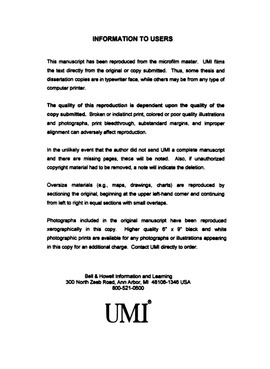| dc.contributor.advisor | Fiedler, Brian, | en_US |
| dc.contributor.author | Fleischfresser, Luciano. | en_US |
| dc.date.accessioned | 2013-08-16T12:30:57Z | |
| dc.date.available | 2013-08-16T12:30:57Z | |
| dc.date.issued | 2000 | en_US |
| dc.identifier.uri | https://hdl.handle.net/11244/5991 | |
| dc.description.abstract | Important features of the proposed formulation for precipitating deep turbulent clouds include the ability to calculate precipitation efficiencies, a new postulation relating cumulus buoyancy to solar radiation, and the implicit account of latent heat release that manifest itself by scaling cumulus drafts to observed magnitudes. The Hadley model is based on primitive equations, and it incorporates the NCAR column radiation scheme as well as the atmospheric branch of the hydrological cycle. To calculate climatic feedbacks, the inverse simulation approach is used. An interrelationship technique is applied to diagnose feedback factors associated with changes of water vapor amount and distribution, of lapse-rate, and of deep cumulus cloud cover. The aim is to contrast the novel model for deep clouds with a mass flux deep cumulus parameterization when a thermally direct circulation (Hadley cell) is present. | en_US |
| dc.description.abstract | When only a lapse-rate adjustment is used to crudely represent tropical convection, the calculated climate sensitivity lies in the typical range of equatorial sensitivities given by global circulation models (GGMs). This result suggests that the Hadley model is capturing the essential physics of these models as far as these sensitivities are concerned. In the comparison analyses, the climate equilibrium is stable and effected by net positive feedback when the new cumulus model is used. Moreover, the calculated tropical climate sensitivities are consistently lower than the aforementioned typical range, bringing them closer to sensitivities suggested by observed data. Interestingly, the tropical climate equilibrium is unstable with the mass flux scheme. It is shown quantitatively that relative humidity changes in the model upper-troposphere determine the sign of the water vapor feedback. Recommendations to narrow humidity uncertainties in climate change simulations are presented. | en_US |
| dc.description.abstract | This research is about developing a more internally consistent formulation of cumulus convection and the atmospheric branch of the hydrological cycle in a newly developed Hadley circulation model. The ultimate goal is to analyze the climate equilibrium of a symmetric tropical hydrostatic atmosphere, particularly studying cause and effect relations determining the magnitude of water vapor-related feedbacks in climate sensitivity experiments. | en_US |
| dc.format.extent | xvi, 129 leaves : | en_US |
| dc.subject | Applied Mechanics. | en_US |
| dc.subject | Physics, Atmospheric Science. | en_US |
| dc.subject | Climatic changes. | en_US |
| dc.subject | Tropics Climate. | en_US |
| dc.subject | Cumulus. | en_US |
| dc.subject | Convection (Meteorology) | en_US |
| dc.subject | Environmental Sciences. | en_US |
| dc.title | Tropical climate stability, Hadley circulation, and deep cumulus convection: Vital synergism on a wet planet. | en_US |
| dc.type | Thesis | en_US |
| dc.thesis.degree | Ph.D. | en_US |
| dc.thesis.degreeDiscipline | School of Meteorology | en_US |
| dc.note | Source: Dissertation Abstracts International, Volume: 61-06, Section: B, page: 3095. | en_US |
| dc.note | Major Professor: Brian Fiedler. | en_US |
| ou.identifier | (UMI)AAI9975794 | en_US |
| ou.group | College of Atmospheric & Geographic Sciences::School of Meteorology | |
